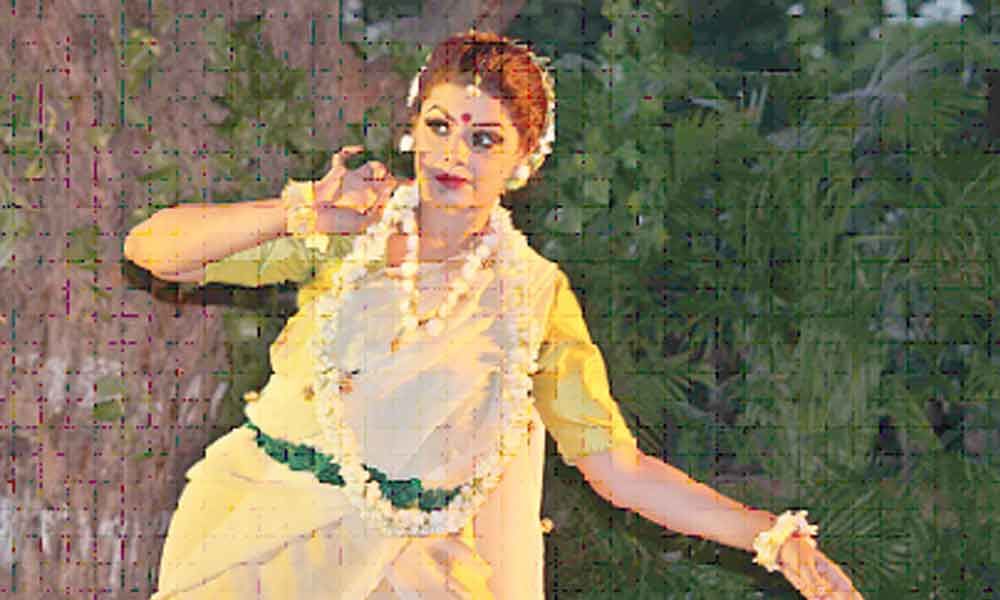Pujita's interpretation of Shakuntalam

Kuchipudi and Vilasininatyam dancer Pujita Krishna presented a Solo interpretive feature – dance, drama, dialogue inspired by Kalidasa’s Abhiyana Shakuntalam.
Kuchipudi and Vilasininatyam dancer Pujita Krishna presented a Solo interpretive feature – dance, drama, dialogue inspired by Kalidasa's Abhiyana Shakuntalam.
Shakunthala has just been spurned by Dushyanta. Heartbroken, pregnant with his child, she wanders hopelessly in the forest when she is suddenly accosted by an akaash vani, which is in reality her own alter ego that starts questioning her about who she is. As she attempts to answer the questions, Shakunthala recounts her past. What follows is a psychological and emotional transformation of Shakuntala and her liberation from all preceding despair.
In 'Swacchanda Vallari" , Pujita depicts an inward journey that Shakuntala might have taken: that of the universal challenge of sublimating betrayal and bitterness into an internal quest for meaning and purpose. Vanajyotsana, a forest creeper epitomises Shakuntala's haplessness and vulnerability.
Shakuntala is deeply attached to Vanajyotsana and identifies with it. She comes to terms with her true purpose in life, she realises she must stop being like a creeper that depends upon a tree for its identify and survival.
The bee here stands for Dushyanta, who by the very virtue of being a king, has the sanction to court several women. The presence of the bee heralds confusion in shakuntala's life. By warding off the bee, she lets go of the regrets of the past, and becomes a "Swacchanda Vallari" or a "free Creeper".
The venue Shilpaseema is an idyllic location within Shilparamam set amidst rocks, trees, fountain, waterfall that is just the right setting for a theme like that of Shakunthala. One couldn't have found a more fitting venue for the staging of this dance feature.

















